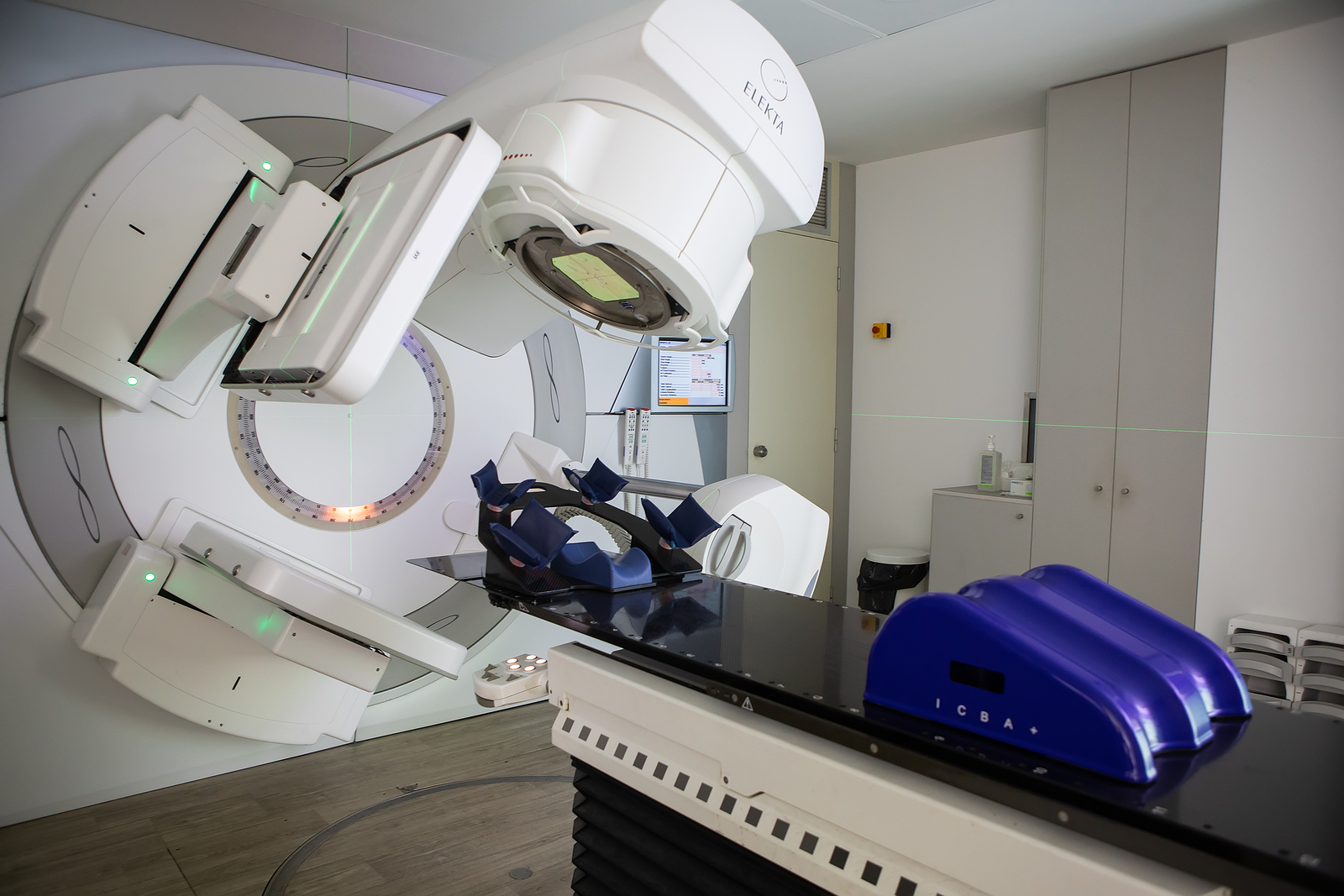- News ›
- How Radiotherapy Can Treat Severe Astrocytoma Cases
How Radiotherapy Can Treat Severe Astrocytoma Cases

An astrocytoma is a brain tumour that takes its name from the star-shaped astrocyte cells, which form part of the central nervous system and are usually found in the brain or, occasionally, the spinal cord.
However, while this description is quite specific, patients and their loved ones need to understand that the prognosis and treatment may vary significantly.
Not only does the location of the tumour vary, but so does the most important issue concerning any kind of tumour, the question of whether it is benign (non-cancerous) or malignant (cancerous). An astrocytoma can be either of these and that goes a long way to determining what astrocytoma treatment options might be most effective.
If you have been diagnosed with an astrocytoma, you may have already been advised of these distinctions by your healthcare providers. However, you may also find that the care given up to now has not been effective and be keen to see what we can offer.
For instance, a case widely reported recently has been that of Clare Smerdon from Torquay in the UK. The 37-year-old was first diagnosed in 2022 after experiencing flashing lights and rainbow-like patterns in her vision. An MRI scan revealed a Grade 4 astrocytoma.
Due to the aggressive nature of the tumour, she suffered worsening symptoms while awaiting surgery, including amnesia that prevented her from remembering she was a mother, despite giving birth shortly before her diagnosis.
Following surgery to remove the tumour, she received radiotherapy and chemotherapy and this proved so effective that she was able to see her young son Teddy start school.
Ms Smerdon has not been fully cured and still has some symptoms such as compromised eyesight, but it is a testimony to what is achievable that, even after being diagnosed with the most aggressive form of astrocytoma, she was able to mark an important milestone in her son’s life.
After surgery, most grade 3–4 astrocytomas receive fractionated external-beam radiotherapy (often IMRT) with temozolomide. This combined approach (chemoradiation) is a standard part of care for eligible patients.
Stereotactic radiosurgery (e.g., Gamma Knife) may be considered selectively for small, well-defined areas of residual or recurrent disease—its use depends on location and safety. At Queen Square, our MDT advises if and when Gamma Knife is appropriate and coordinates care with your neuro-oncology team.
For grade 2 disease, the decision to use radiotherapy is more balanced and based on individual factors (age, symptoms, tumour size and what remains after surgery, as well as molecular markers). Your team will discuss the timing and type of radiotherapy if it’s recommended.
Learn more about our advanced radiotherapy treatments for astrocytoma on the Queen Square website.
However, while this description is quite specific, patients and their loved ones need to understand that the prognosis and treatment may vary significantly.
Not only does the location of the tumour vary, but so does the most important issue concerning any kind of tumour, the question of whether it is benign (non-cancerous) or malignant (cancerous). An astrocytoma can be either of these and that goes a long way to determining what astrocytoma treatment options might be most effective.
The Four Grades Of Astrocytoma
In benign cases, the tumour tends to grow much more slowly, whereas cancerous astrocytomas can develop at a much faster rate. Indeed, the World Health Organization categorises them in four ways:- Grade 1 - These astrocytomas, which include pilocytic astrocytomas and subependymal giant cell astrocytomas (SEGA), are typically slow-growing. If the whole tumour can be safely removed, surgery may be enough, with ongoing monitoring.
- Grade 2 - These tumours grow by diffusely infiltrating nearby brain tissue, so surgery alone is often not enough. Your team may recommend radiotherapy, chemotherapy and/or monitoring depending on your age, symptoms, and what remains after surgery.
- Grade 3 - These are more aggressive; treatment usually combines surgery with radiotherapy and chemotherapy.
- Grade 4 - In adults, the most common and most aggressive astrocytoma is glioblastoma (IDH-wildtype). About 90 per cent start as Grade 4 (“de novo”), with a minority progressing from lower grades.
If you have been diagnosed with an astrocytoma, you may have already been advised of these distinctions by your healthcare providers. However, you may also find that the care given up to now has not been effective and be keen to see what we can offer.
Effective Treatment For Grade 4 Astrocytomas
As has been noted above, when radiotherapy is required and used to treat an astrocytoma, it is almost always used against a malignant type of Grades 2,3 or 4. Some might assume that the prognosis is always poor for those with a Grade 4, but the outcomes can be a lot better than expected.For instance, a case widely reported recently has been that of Clare Smerdon from Torquay in the UK. The 37-year-old was first diagnosed in 2022 after experiencing flashing lights and rainbow-like patterns in her vision. An MRI scan revealed a Grade 4 astrocytoma.
Due to the aggressive nature of the tumour, she suffered worsening symptoms while awaiting surgery, including amnesia that prevented her from remembering she was a mother, despite giving birth shortly before her diagnosis.
Following surgery to remove the tumour, she received radiotherapy and chemotherapy and this proved so effective that she was able to see her young son Teddy start school.
Ms Smerdon has not been fully cured and still has some symptoms such as compromised eyesight, but it is a testimony to what is achievable that, even after being diagnosed with the most aggressive form of astrocytoma, she was able to mark an important milestone in her son’s life.
Radiotherapy For Astrocytomas
Radiotherapy for astrocytomas is usually given as external-beam radiotherapy—highly precise beams delivered from outside the body, often using modern techniques such as IMRT to protect healthy brain tissue.After surgery, most grade 3–4 astrocytomas receive fractionated external-beam radiotherapy (often IMRT) with temozolomide. This combined approach (chemoradiation) is a standard part of care for eligible patients.
Stereotactic radiosurgery (e.g., Gamma Knife) may be considered selectively for small, well-defined areas of residual or recurrent disease—its use depends on location and safety. At Queen Square, our MDT advises if and when Gamma Knife is appropriate and coordinates care with your neuro-oncology team.
For grade 2 disease, the decision to use radiotherapy is more balanced and based on individual factors (age, symptoms, tumour size and what remains after surgery, as well as molecular markers). Your team will discuss the timing and type of radiotherapy if it’s recommended.
Learn more about our advanced radiotherapy treatments for astrocytoma on the Queen Square website.

